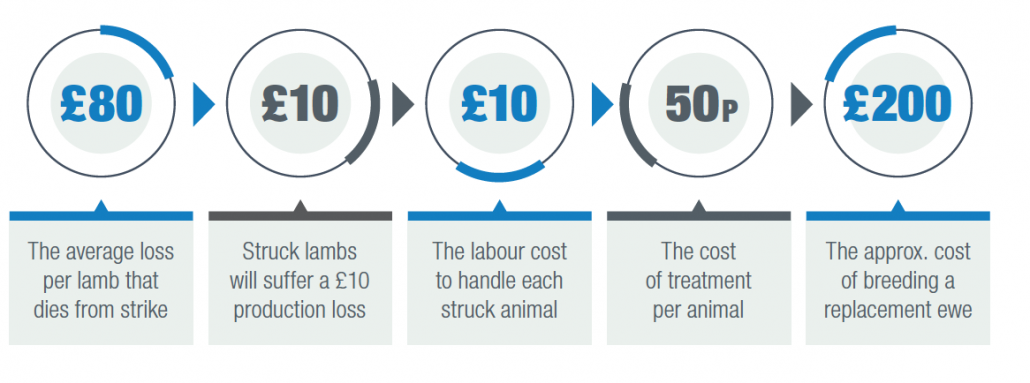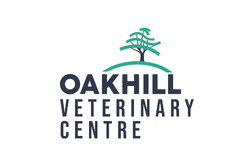Fly treatment
These warmer days, combined with the inevitable rain, provide the perfect habitat for Lucilla sericata more commonly known as the blowfly. We now recognise the blowfly season as being longer with strike seen as early as February and as late as November, so it’s important that our fly prevention adapts to the changing climate too.
94% of farmers admit to being caught out by flystrike
Most will know what a fly struck sheep looks like:
[checklist icon=”fa-check-circle” iconcolor=”#39aa87″ circle=”yes”]
- Agitated, itchy, away from flock, smell, wool discoloured and eventually loose wool.
- This progresses to anaemia, septicaemia & ammonia toxicity causing lethargy and then death.
[/checklist]
Early intervention is important not only to prevent deaths but also to reduce the general fly population.
To create a fly control programme it is important to understand what type of conditions these flies thrive in and also to use your knowledge from previous experiences on your own farm with your own sheep.
Blowflies need the following conditions to successfully complete their lifecycle:
[checklist icon=”fa-check-circle” iconcolor=”#39aa87″ circle=”yes”]
- Soil temperature over 9°C
- Long periods of rainfall (causes fleece to rot)
- Low wind speeds (allows increased fly mobility)
- High temperatures and humidity causes microclimate in fleece that is attractive to flies to lay eggs.
- NADIS now has a blow fly alert web page which will use data from the Met Office to create a local risk for blow flies.
[/checklist]
In perfect conditions fly eggs hatch in 12 hours and once larvae start feeding they release a powerful odour which attracts more flies causing significant damage within 24 to 36 hours of the first egg being laid. This emphasises the need for daily flock checks.
Losses due to fly strike are seen as: death of individuals, reduced lamb growth rate, reduced productivity, down grade wool clip, cost and time of treatment. Elanco has calculated these costs as shown:

To prevent Blowfly Strike:
[checklist icon=”fa-check-circle” iconcolor=”#39aa87″ circle=”yes”]
- Dagging and crutching (start in April and every 4-6 weeks)
- Keeping breeds of sheep with more open, hairy or self shedding coatsearing (especially thick fleeced breeds)
- Shearing (especially thick fleeced breeds)
- Culling ewes with narrow breeches or deformities that result in soiling
- Tail docking in lowland flocks
- Reduce incidence of footrot
- Eliminate scouring issues (for example keep coccidiosis, worm burden and nutrition under control)
- Frequent flock inspections (at least daily)
- Appropriate insectide use
[/checklist]
Insecticide use: We recommend starting treatment against flies now to reduce fly populations for the rest of summer. Keep an eye on the NADIS blow fly alert map and ensure your sheep are protected at the high risk times. There are various products you can use to prevent blow fly strike and these are listed in the table below:
| Product | Drug | Length of action | Meat withdrawal |
|---|---|---|---|
| Vetrazin | Cyromazine (IGR) | 10 weeks | 28 days |
| Clik extra | Dicyclanil (IGR) | 19 weeks | 40 days |
| Clik | Dicyclanil (IGR) | 16 weeks | 40 days |
| Clik Zin | Dicyclanil (IGR) | 8 weeks | 7 days |
| Dysect sheep | Alpha cypermethrin | 8-10 weeks | 49 days |
| Ectofly/ Crovect | Cis Cypermethrin | 6-8 weeks | 8 days |
| Fly and lice spot on/ Spotinor | Deltamethrin | 6 weeks | 35 days |
| Paracide 62/ Osmonds gold fleece dip |
Diazinon dip (Organophosphate) Cypermethrin |
8-10 weeks | 70 days/ 49days respectively |
* IGR products are NOT effective as treatments
To date there has been no resistance of blow flies to any insecticide formally reported.
